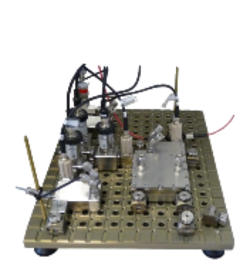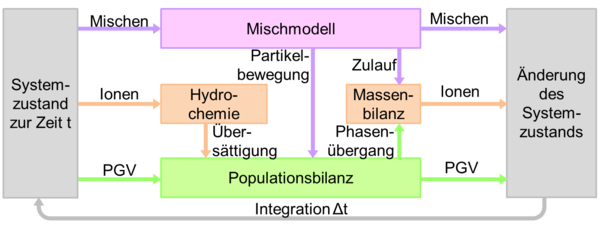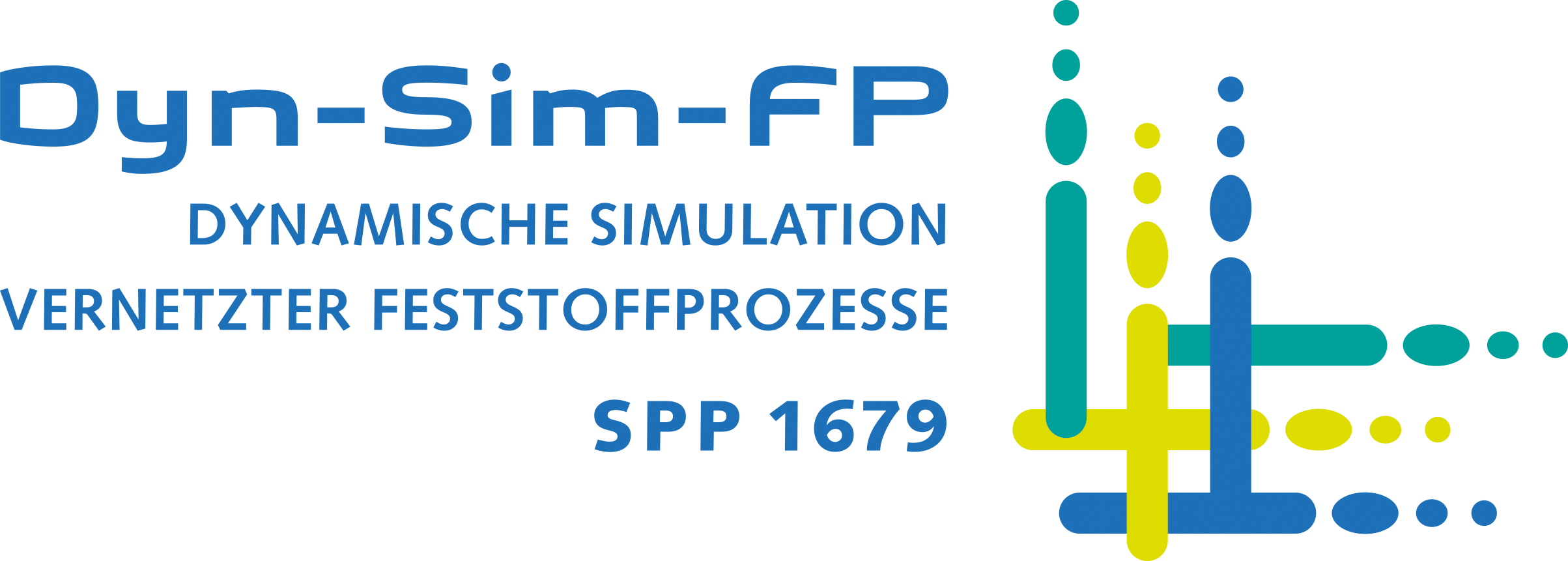Flowsheet simulation of integrated precipitation processes examined for the case of a modular micro reaction setup
- Institut:
Lehrstuhl für Feststoff- und Grenzflächenverfahrenstechnik, FAU Erlangen-Nürnberg
- Projektleiter:
Prof. Dr.-Ing. W. Peukert, FAU Erlangen-Nürnberg
- Bearbeiter:
Dipl.-Ing. M. Haderlein, FAU Erlangen-Nürnberg
Dr.-Ing. D. Segets, FAU Erlangen-Nuremberg
Project goal

Precipitation is an important process for the synthesis of nanoparticles with novel properties. This is not limited to single-phase spherical metal and semiconductor nanoparticles, but also allows the production of complex multiphase systems, inorganic core-shell particles and shape anisotropic structures such as rods. Core-shell particles are applied in solar cells, medical imaging and pharmacy; multiphase systems find application in catalysis and batteries; shape anisotropy plays an important role in optoelectronic applications and hard drives. This project studies both, reaction controlled and mixing controlled systems using the example of a modular micro reaction technology based setup from Ehrfeld Mikrotechnik BTS GmbH. Thanks to the modular design, the setup can be adapted to each special case considered.
Aim of this project is the development of a widely applicable module for the dynamic flow sheet simulation of precipitation processes by means of a micro-reaction technology setup and implementation in the framework simulation program Dyssol.
Project evolution up to date
-
Study of reaction and mixing controlled systems.
-
Development of models that can be adapted to various material systems.(See Fig. 2)
-
Reaction controlled systems are calculated on the basis of instantaneous, ideal mixing

Reaction controlled Systems:
-
Reaction controlled material systems were modeled with the example of ZnO nanoparticles. An efficient module for Ostwald ripening was developed and validated. The developed module is not limited to ZnO, but was also applied to other quantum materials. Validation with CdSe was done and the resulting data is a starting point for the bivariate case in the next sponsoring round.
-
Optimizing self-similar PSDs is realized in a three step process, which involves mixing and growing of batches of differently sized particles. The resulting particle ensembles feature significantly narrower size distributions and thus more precisely defined properties.
Mixing controlled systems
-
Development of a reduced mixing model, which consists of four mixing zones. Mass transport over the four zones is used to initiate solid formation. The Villermaux reaction was used for experimental validation.
-
The individual partial models were joined to consider the influence of mixing and complexing as well as numerous concurring solid phase processes.
-
Modeling mixing controlled systems is done with the direct quadrature method of moments (DQMOM). A hybrid approach is used to model an unlimited number of solid phases. Coupling is done over the mass balance. Processes that occur in only one phase are modeled via the according PB. Processes occurring over more than one phase require more specific approaches
Work program
The future work program splits into three sections:
-
Extension of the precipitation module for bivariate population balances: The existing mixing controlled precipitation model is extended in terms of handling bivariate population balances to account for e.g. shape anisotropy and oriented aggregation.
-
Development of a generalized precipitation module for the dynamic flow sheet simulation: A flow sheet module describing Ostwald ripening has already been developed. This module is extended by the work on mixing controlled systems. Thus, various features of precipitation processes will be described for many different material systems.
-
Development of a module for process optimization: Besides the process simulation environment, the groups of Heinrich (Z project) and Leugering develop an environment for process optimization which requires additional modules. A respective module describing the full model shown in Figure 2 (mixing, hydro chemistry, population balances, mass balance) is developed in close collaboration with group of Heinrich.


